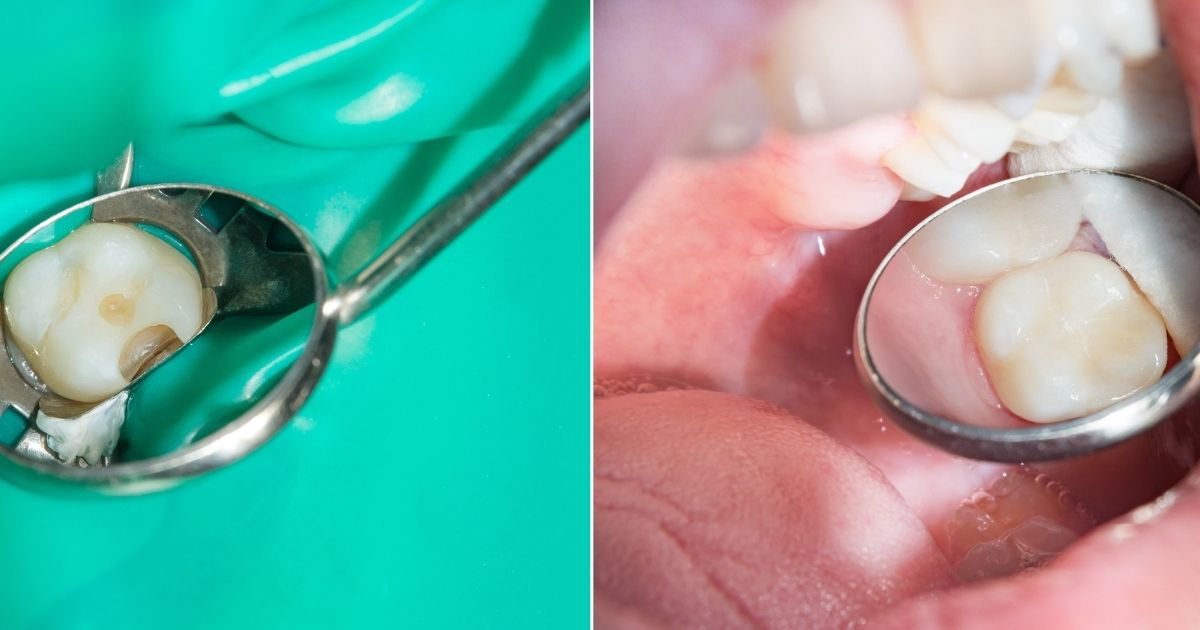How do you know if you need a filling?
Modern lifestyles are having a bigger impact on our teeth than we may know.
As simple carbohydrates lead to tooth decay, we may be experiencing more aches and pains or dental damage. If you’re concerned about your teeth, here are some signs you may need a filling.
Reading time: 4 minutes

What are dental fillings?
Dental fillings are a type of dental care used to address damage caused by tooth decay. This damage may be a small hole or cavity, which is filled with tooth-coloured or silver-coloured amalgam materials.
When our teeth are constantly exposed to acidic foods, the tooth’s surface can lose minerals. If this is left untreated, the enamel can break down and cause a hole or cavity. In turn, this can lead to pain and even infections – so it’s essential to prevent tooth damage, or attack it at the root.
What causes tooth decay?
Tooth decay happens when sugary foods dissolve the surface of our teeth. If we don’t brush our teeth properly, leftover food deposits can cause plaque to form.
Sugar in our food then reacts with the bacteria in plaque, causing acids to form and attack the enamel in the teeth.
Left untreated, tooth decay can turn into cavities.
Types of cavities
There are three main types of cavities: coronal, root and recurrent decay. The commonest are coronal cavities, which are on the chewing surfaces or between the teeth.
Root cavities are more serious. As we get older, our gums tend to recede, which can leave roots exposed. This makes them vulnerable to decay.
Finally, recurrent decay is found on any tooth fillings or crowns you may already have. If these are not properly maintained, plaque can build up around these surfaces.
What are signs you need a filling?
You can spot signs you need a filling long before they become serious. The longer these signs are ignored, the more likely they are to develop into cavities or cause other dental problems.
Some of the common signs of tooth decay include:
- Dark spots – this is an early sign of dental decay, showing that enamel has been damaged. There may be white, brown or black spots on the tooth.
- Tooth sensitivity – if you notice one particular tooth reacting when exposed to hot or cold temperatures, it could be a sign of further damage.
- Food stuck between teeth – if your food regularly gets stuck between the same set of teeth, this could signify erosion.
- Frayed dental floss – you may notice tearing on floss when you remove it, suggesting it is snagging on a damaged tooth.
- Changes to tooth structure – you might spot a visible hole or even a chipped or fractured tooth.
- Throbbing or sharp pain – this may be when you chew or if you touch your teeth.
- Damage to previous amalgam fillings – if you’ve had dental treatment previously, the filling may be cracked, broken or missing

How can I stop my teeth from decaying?
The good news is that you can prevent fillings with excellent oral hygiene. This includes check-ups every six months to two years. Our dentists can recommend a care plan for you based on your overall dental health and lifestyle.
Good practice is to always:
- Brush your teeth at least twice a day with a fluoride-based brand
- Use interdental brushes or floss every day to dislodge food
- Avoid smoking, excessive alcohol and too many sugary foods
- Arrange dental check-ups for existing amalgam or composite fillings
Dental decay can be reversible if caught early. Enamel repairs itself with minerals in your saliva, which you can speed up by using fluoride-based toothpaste and mouthwash. You should speak to your dentist if you notice tooth pain.
What happens if you refuse a filling?
If you leave your natural teeth untreated, cavities can develop. The damage will continue if these cavities are not filled, and may even attack the soft tissue (known as pulp) inside the tooth.
This could lead to a painful abscess or infection and may require root canal treatment. In some cases, you may need the tooth removed – which is why it’s so important to keep up with your dental hygiene.